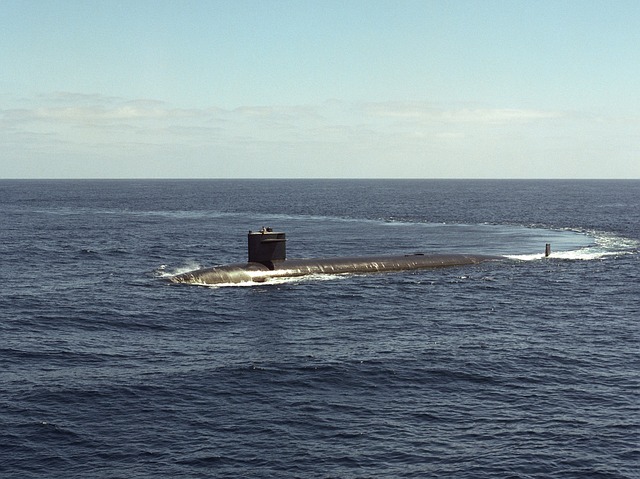
A Royal Navy nuclear submarine preparing to go on patrol experienced a serious malfunction while it was diving recently that nearly ended in what experts believe could have been the worst disaster experienced by the Royal Navy since World War II.
The Vanguard-class vessel, which is now a few decades old, was carrying 140 crew as well as Trident 2 Doomsday missiles when a depth gauge failed. This caused its commanders to believe that it was level at a safer and shallower depth while it was actually still descending and meant they did not know how deep it was actually traveling. It was almost into what is considered the “danger zone” when engineers at the back realized that something was amiss and raised an alarm.
Although the sub was within its limits of safe operation at the time of the incident, it was diving toward its crush depth. When a submarine reaches its crush depth, it can implode because of the water pressure. The Sun, which broke the story, reports that if the ship had imploded, a salvage mission would need to be launched immediately to recover the Royal Navy’s top-secret vessel as well as its nuclear reactor before Russia arrived to the scene.
A secondary depth gauge is being credited with saving the day, underscoring the importance of the redundant systems used by subs to help reduce the risks that are involved in operating these complicated military vessels. The Royal Navy carried out an investigation into the incident, which took place more than a year ago but only recently came to the public’s attention. The details of the investigation are being kept confidential, however.
Human knowledge is under attack! Governments and powerful corporations are using censorship to wipe out humanity's knowledge base about nutrition, herbs, self-reliance, natural immunity, food production, preparedness and much more. We are preserving human knowledge using AI technology while building the infrastructure of human freedom. Use our decentralized, blockchain-based, uncensorable free speech platform at Brighteon.io. Explore our free, downloadable generative AI tools at Brighteon.AI. Support our efforts to build the infrastructure of human freedom by shopping at HealthRangerStore.com, featuring lab-tested, certified organic, non-GMO foods and nutritional solutions.
An unnamed source told the Sun: “It’s not the engineers’ job to control the sub’s depth but they saw how deep they were and realized something was wrong.
"Technically the sub was still at a depth where we know it can operate, but if it ever has to go that deep the whole crew is piped to action-stations. That hadn’t happened. The sub wasn’t supposed to be there, and it was still diving. And if it had carried on going, it doesn’t really bear thinking about,” they added.
U.K. carries out Continuous At-sea Deterrence Missions with nuclear subs
The U.K. has had at least one Royal Navy sub equipped with nuclear missiles on patrol at all times since 1969 as part of its Continuous At-Sea Deterrence mission. This method of continuously deploying subs with nuclear reactors and missiles is so expensive that just four other countries are currently employing it: the U.S., Russia, France and China.
The U.K. has a fleet of four Vanguard subs, which is a class of nuclear-powered ballistic missile subs that are part of their Trident nuclear program. The subs are almost 500 feet long and weigh 16,00 tons. Each one is armed with 48 Trident 2 D5 nuclear warheads. They are based at Faslane in Scotland.
Earlier this year, inspectors identified a defect that resulted from previous work on one of the Vanguard subs while it was undergoing maintenance, but it was reported and fixed, according to the U.K. Ministry of Defense.
The specific vessel involved in the incident has not been disclosed due to security concerns. However, the Vanguard fleet is expected to be replaced within the coming decade by Dreadnought submarines. The new subs are expected to be slightly longer but considerably bigger and will place a greater emphasis on improving the crew’s quality of life to make longer patrols more tolerable.
Sources for this article include:
Please contact us for more information.















